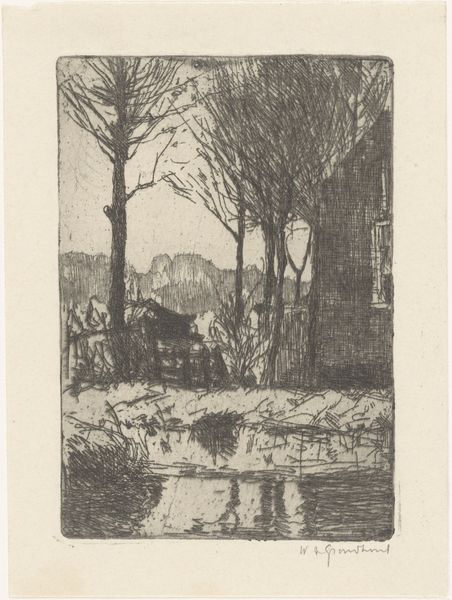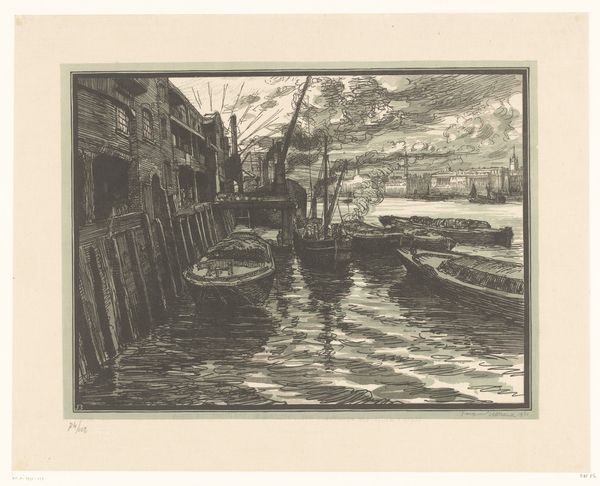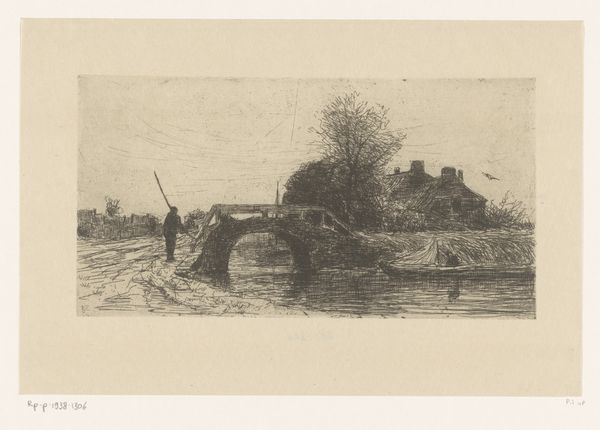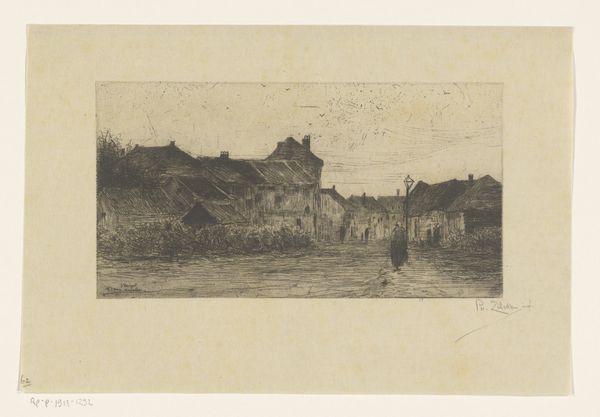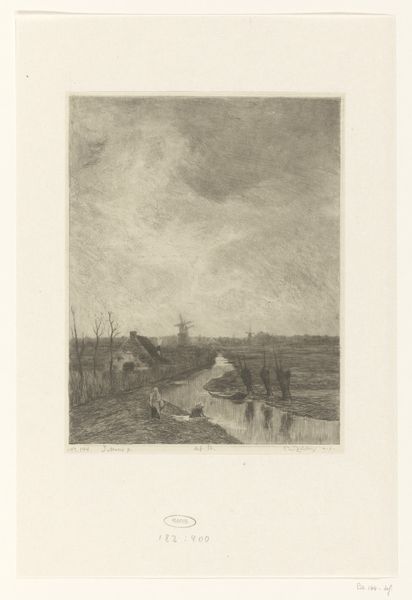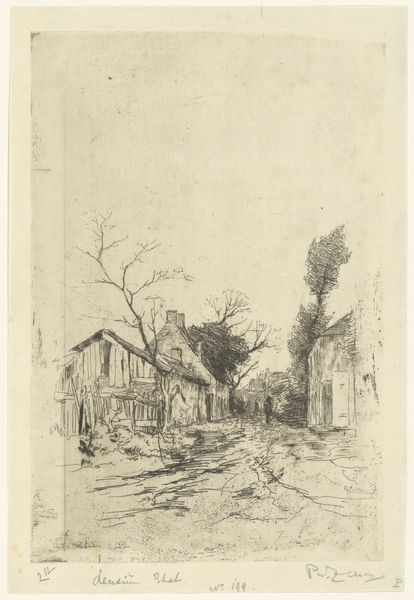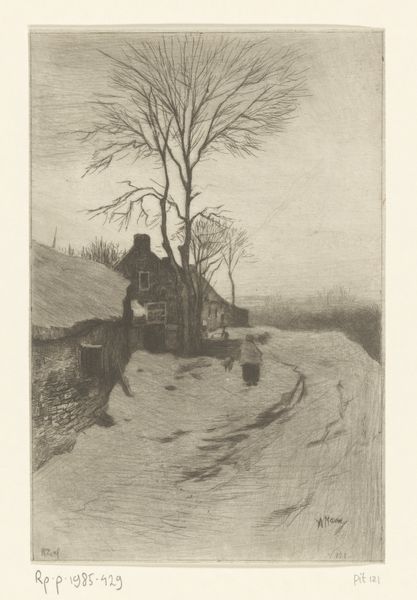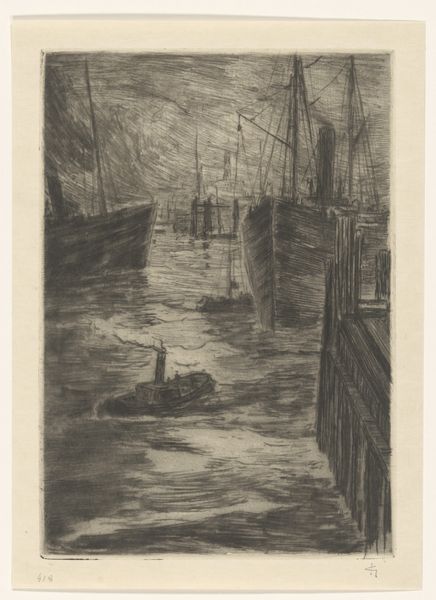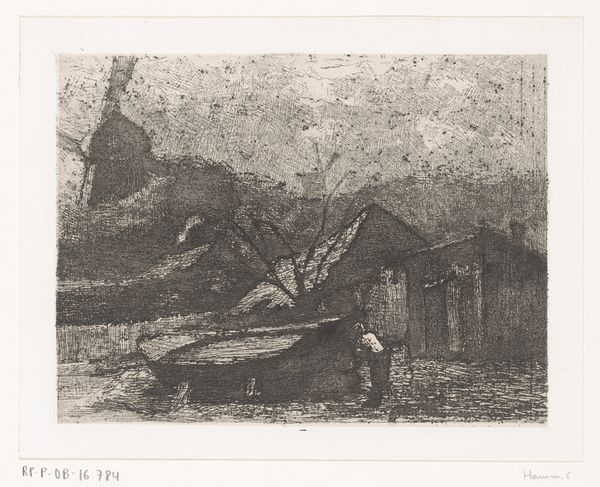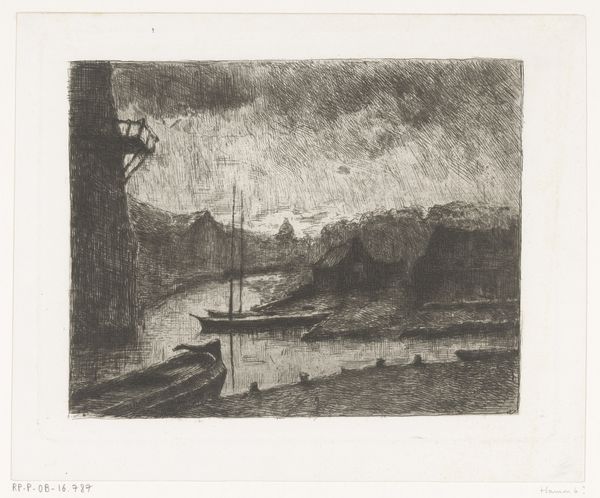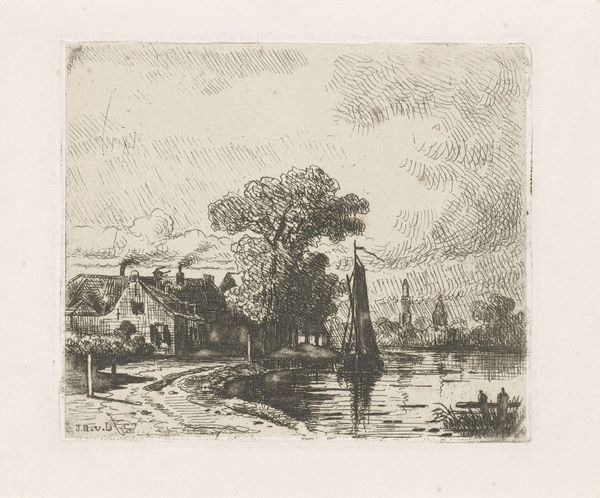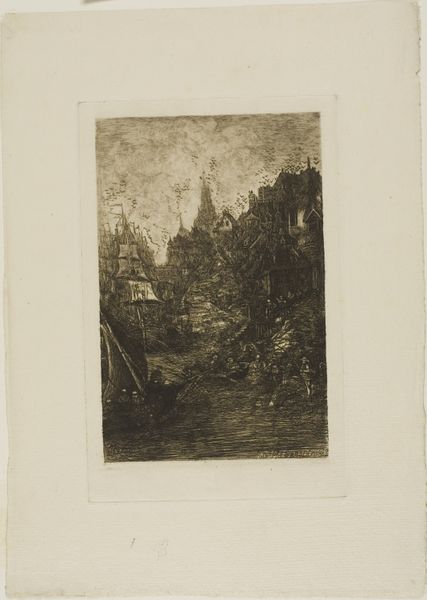
drawing, print, etching
#
drawing
# print
#
etching
#
landscape
#
etching
#
realism
Dimensions: height 190 mm, width 145 mm
Copyright: Rijks Museum: Open Domain
Editor: So, this is "Farmhouse in a Landscape with a Bare Tree" by Jan Willem Nortier, dating sometime between 1874 and 1919. It's an etching. I find it so bleak, yet captivating. What jumps out at you when you see this, and how do you interpret it within the context of its time? Curator: The starkness of the image is striking, isn't it? Considering the period, etched images like this provided a readily reproducible view of the rural landscape. We see not just a scene but a representation of the relationship between humans and their environment, mediated by economic and social realities. The "bare tree" isn’t merely a detail; it becomes a symbolic marker. How do you think the industrial revolution plays a role? Editor: That's a good question. Perhaps the bare tree stands in stark contrast to the new factories popping up. The landscape feels forgotten, maybe? Almost a sense of the rural being overshadowed by urban progress. Curator: Exactly. Etchings like these provided the public with an accessible view of the countryside as they were losing connection to it, and these images become carriers of certain socio-political meanings. Who was the etching *for*, and *why*? This makes the artist’s representation all the more important. Consider how Nortier chose to depict the farmhouse-- what are they really communicating? Editor: So it's not just a pretty picture of the countryside, but a comment on the changing social landscape itself, distributed through a relatively new technology! The farmhouse suddenly seems burdened, not quaint. Curator: Precisely. This piece then becomes more than just art, it's social commentary. Editor: Wow, I never considered the broader context in this way. Seeing art as a form of distributed social narrative gives me a totally different appreciation. Curator: Art rarely exists in a vacuum; exploring its environment enhances the dialogue.
Comments
No comments
Be the first to comment and join the conversation on the ultimate creative platform.
